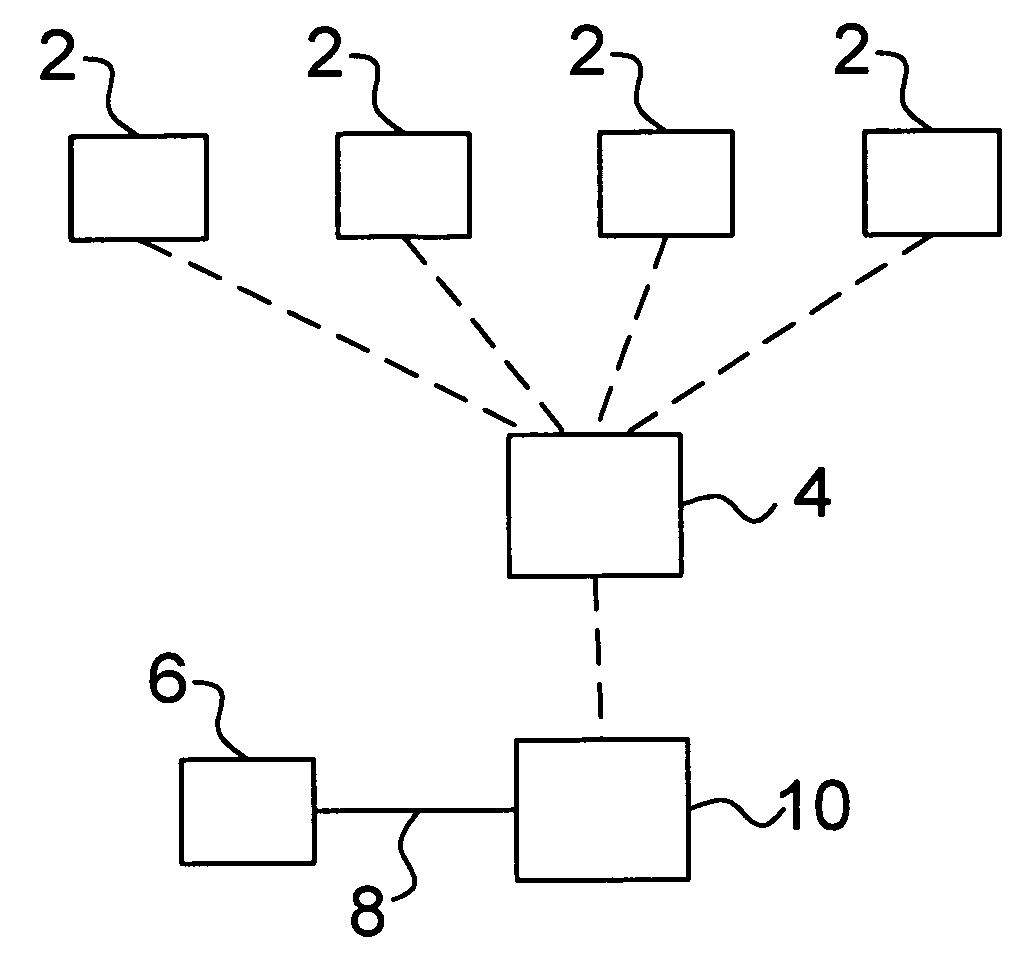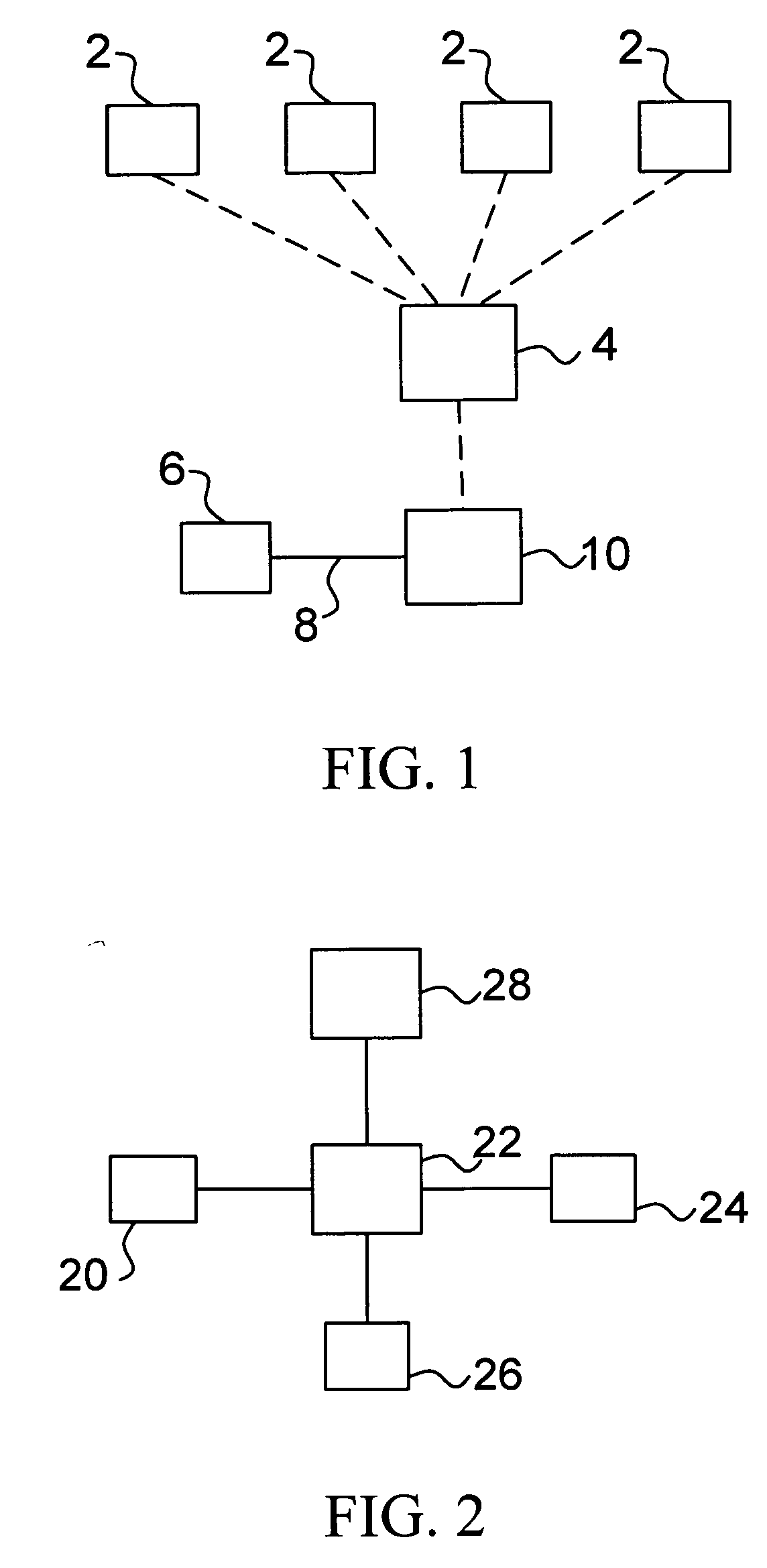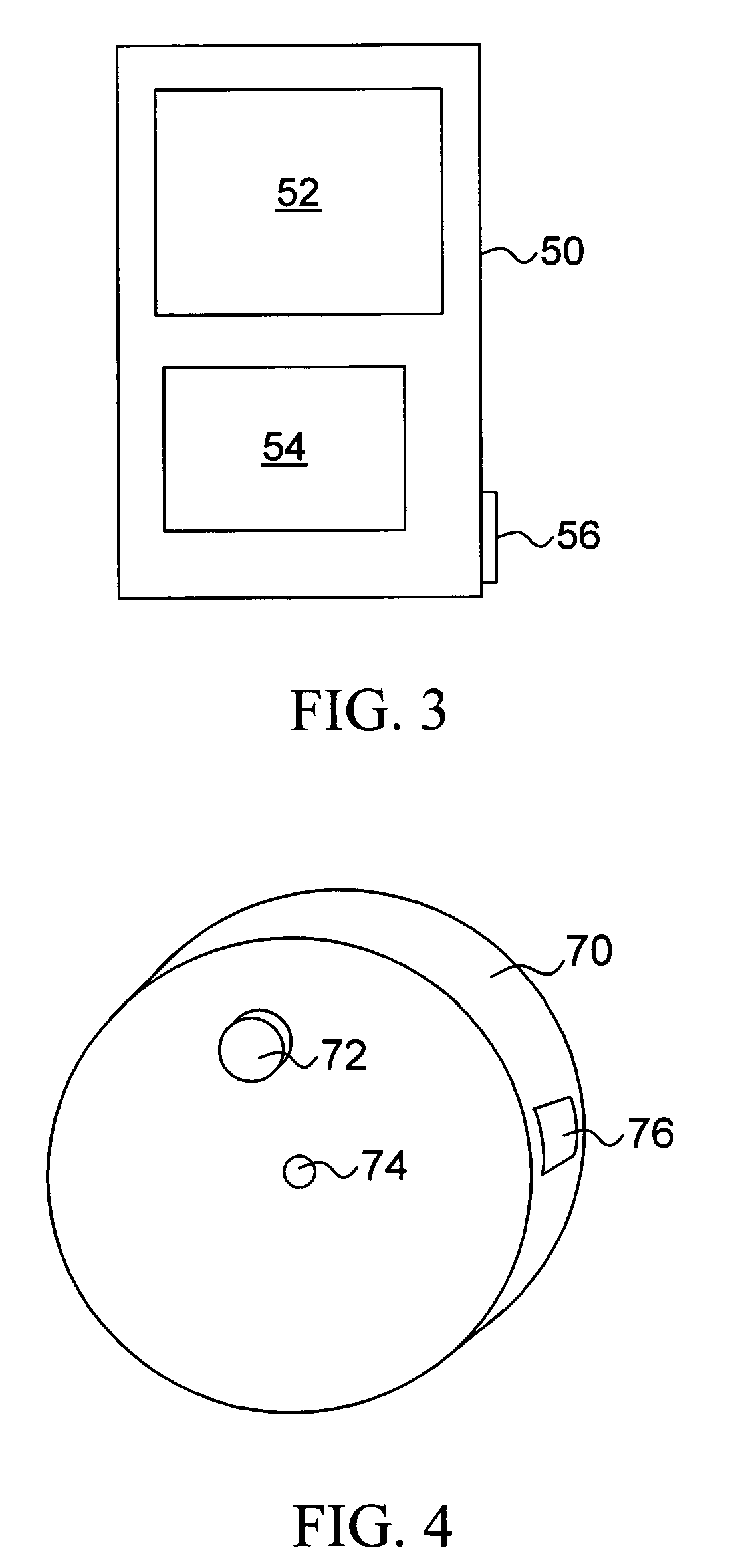Information transmission method and apparatus
a technology of information transmission and transmission method, applied in the direction of transmission, wireless commuication service, indirect connection of subscribers, etc., to achieve the effect of little or no energy consumption of the monitor's battery
- Summary
- Abstract
- Description
- Claims
- Application Information
AI Technical Summary
Benefits of technology
Problems solved by technology
Method used
Image
Examples
Embodiment Construction
[0052] A first embodiment of the invention provides a pollution-monitoring system. The system comprises a plurality of identically-constructed monitors 2, a base station 4 and a remote computer 6 coupled over the Internet 8 to a text-messaging service 10, as illustrated in FIG. 1.
[0053] As shown in FIG. 2, each monitor comprises a sensor 20 that outputs a signal dependent on the concentration of a chemical (pollutant) detected by the sensor. The sensor output is connected to monitor processor 22, which is in turn connected to a monitor memory 24, a re-chargeable battery 26 and a Bluetooth interface 28. These components are all housed in a monitor housing 70, as illustrated in FIG. 4. An electrical connector socket 76 is mounted in the housing and coupled to the re-chargeable battery, for receiving an electrical lead to provide power for re-charging the battery under the control of the processor. A user-operable push button 72 and a light emitting diode 74 are mounted on a front sur...
PUM
 Login to View More
Login to View More Abstract
Description
Claims
Application Information
 Login to View More
Login to View More - R&D
- Intellectual Property
- Life Sciences
- Materials
- Tech Scout
- Unparalleled Data Quality
- Higher Quality Content
- 60% Fewer Hallucinations
Browse by: Latest US Patents, China's latest patents, Technical Efficacy Thesaurus, Application Domain, Technology Topic, Popular Technical Reports.
© 2025 PatSnap. All rights reserved.Legal|Privacy policy|Modern Slavery Act Transparency Statement|Sitemap|About US| Contact US: help@patsnap.com



